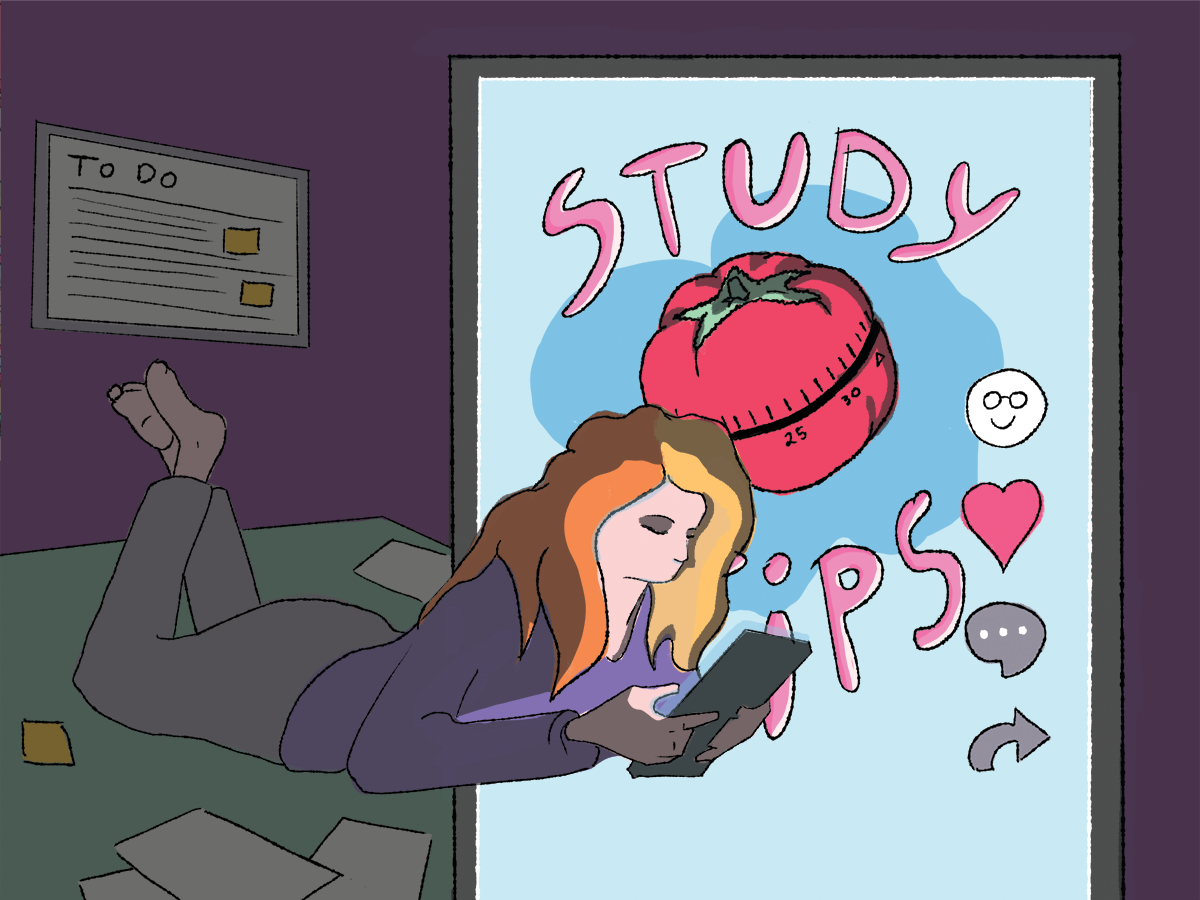Too much time on TikTok can actually have productivity benefits
I know I spend too much time on TikTok. I tell myself that it’s mainly for journalistic research, which is at least partially true, considering that this article, as well as many others of mine, are inspired by videos I see while scrolling through my TikTok feed.
While the majority of my For You Page is riddled with Taylor Swift conspiracy theories, cute thrifted outfits, and cool new restaurants to try, a study hack sometimes slips into the mix (maybe that’s the algorithm telling me something…).
Because I have a pretty intense week of schoolwork coming up, I decided that this would be a perfect time to test out some of the tricks that I’ve saved over time and see if they actually work for me.
Textbook heaven
The first one I tried is a true game changer. Maybe I’ve just been living under a rock, but I was completely excited to see that something like this exists.
Z-lib.org is a free textbook library that gives you easy access to textbooks and research material, which is particularly helpful when the university libraries don’t have what you’re looking for or when you want to save some cash. I was writing a paper and needed a specific book that was already signed out from the university library. To my pleasant surprise, it was on z-lib and I didn’t even have to go in to get a copy!
Too good to be true
The next tip was definitely too good to be true. I saw a TikTok boasting about the “TLDR” Chrome extension that summarizes long readings into bullet points to save time. I have an absurd amount of reading to do this week, so I was stoked to try it.
I probably should have known that it wouldn’t actually work, but I was still quite disappointed when it spewed out gibberish that honestly confused me more than the reading itself. There were two settings: short/concise and detailed/section-wise, but they both came up with the same useless summaries. I also tried with another academic article in case the one I had was the reason it wasn’t working — spoiler alert: it didn’t. I still had to read a million pages on top of the wasted time trying to figure out how to use the extension. Serves me right for believing in things.
Racing to the finish line
I must say that I was very apprehensive about listening to the Mario Kart soundtrack while writing an assignment. Still, I’d seen tons of TikToks claiming that it helps give you a sense of urgency (as if the looming deadlines aren’t enough), so I figured that I needed to be open-minded and give it a try. I also don’t generally listen to music while writing, unless it’s a dark academia classical Spotify playlist to calm myself down when I have tight deadlines. They also help me convince myself I’m much smarter than I actually am.
I was pretty sure that the Mario Kart wouldn’t really have the same effect, but, after listening for a little while, it’s safe to say that working with these tunes was much easier than trying to stay on Rainbow Road. At first, the fast-paced tunes were stressing me out, but after a few minutes, the words were flowing from my hands almost faster than my brain could keep up. My assignment was done within the hour — I highly recommend it.
Tomato timers
Though not an exclusive TikTok hack, I definitely saw some videos preaching the Pomodoro method, which consists of allotting yourself specific amounts of study and break time to increase productivity. The most common time frame is 25 minutes of work to every five-minute break, a pattern that you repeat until you’ve finished your tasks.
I did two cycles of the Pomorodo method and found that it didn’t really work for my way of studying. Setting the timer definitely helped me actually start writing, which is often the most challenging part for me, and I appreciated knowing that I would get a break after 25 minutes. Once the 25 minutes was up, however, I was in a flow state and didn’t want to stop at that moment. For the sake of the article, I continued with the method (you’re welcome), and then took the five-minute break, which definitely didn’t feel long enough. But, I had the same challenges after the second cycle as well.
That’s not to say that the Pomodoro method, or any other study hack mentioned in this article or on TikTok won’t work for you (though if you do figure out the reading summarizer extension PLEASE message me). Everyone has different ways of learning and aspects of doing school work that are more challenging for them — that’s why it’s so important to personalize your habits to what works for you.
Overall, TikTok seems like a great place to look if you’re trying to figure out the best way to get through your schoolwork. Just be weary of “hacks” that are simply too good to be true. And plagiarism. All my homies hate plagiarism. Happy(?) studying!
Visuals by James Fay
